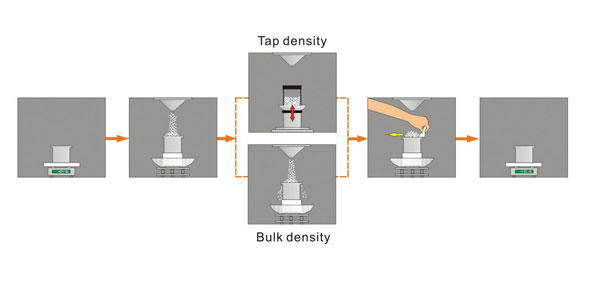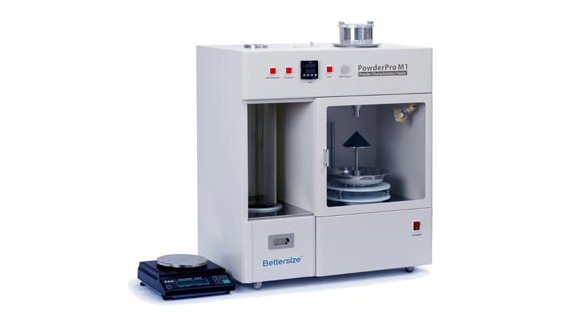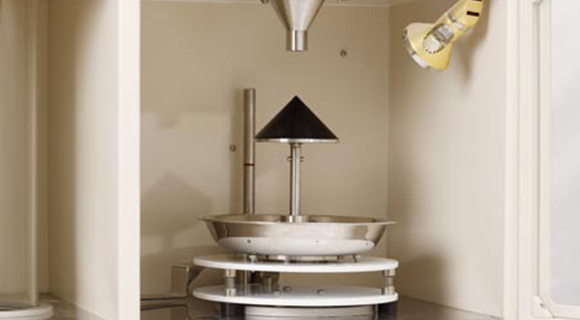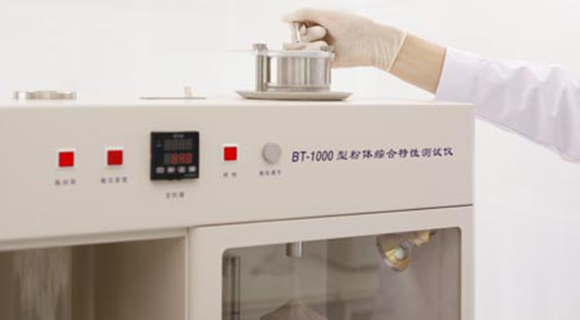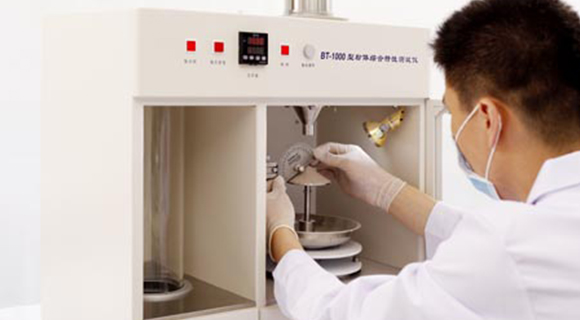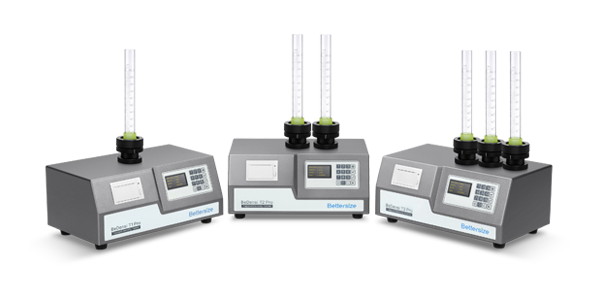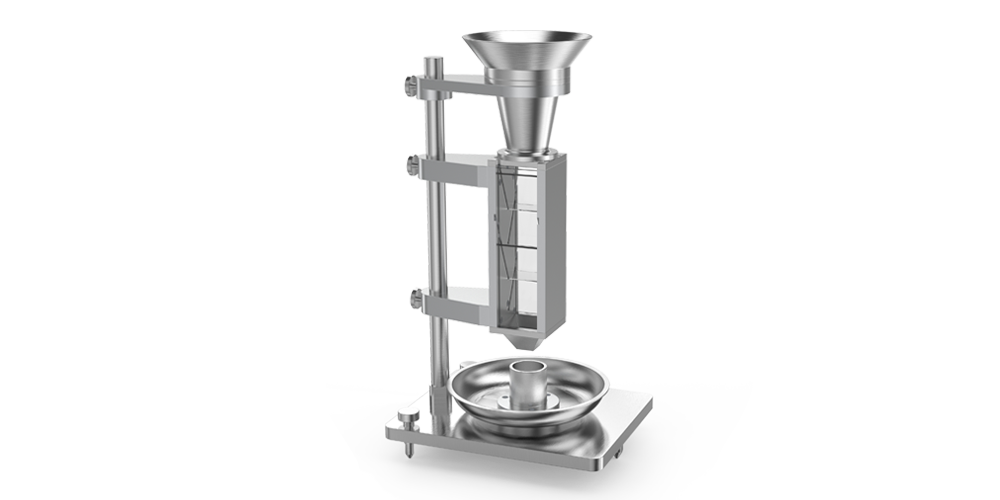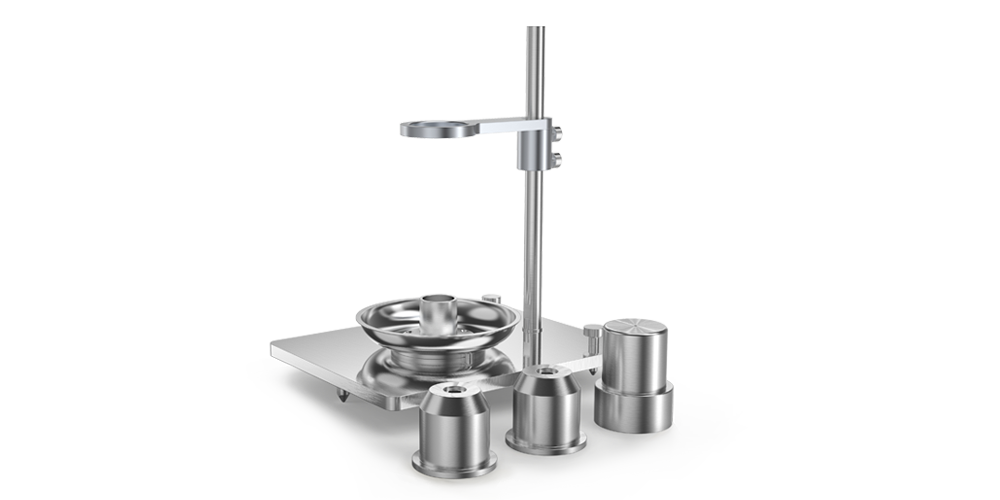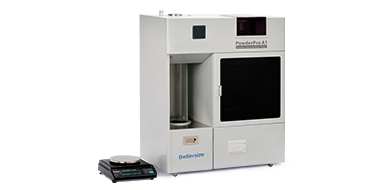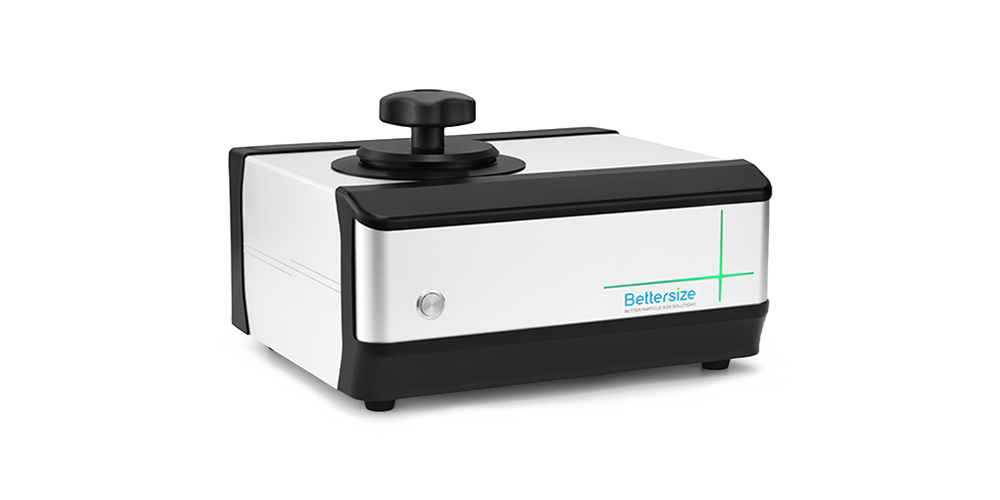Features and Benefits
1) Measured parameters:
Angle of Repose, Angle of Fall, Angle of Spatula, Angle of Slide, Voidage, Cohesion, Bulk Density, Tapped Density, Dispersibility, and Hall Flow Rate (customized).
2) Calculated parameters:
Angle of Difference, Uniformity, Compressibility, Flowability Index, and Floodability Index.
3) Compliance:
Testing methods are fully compliant per ASTMD6393-14, USP32-NF27<616>, and European Pharmacopoeia EP7.0 07/2010: 20934, GB/T16913-2008-4.5, GB/ T1479.1-2011, and GB/T5162-2006.
- Measure Angle of Repos

- Measure Bulk Density and Tapped Density
